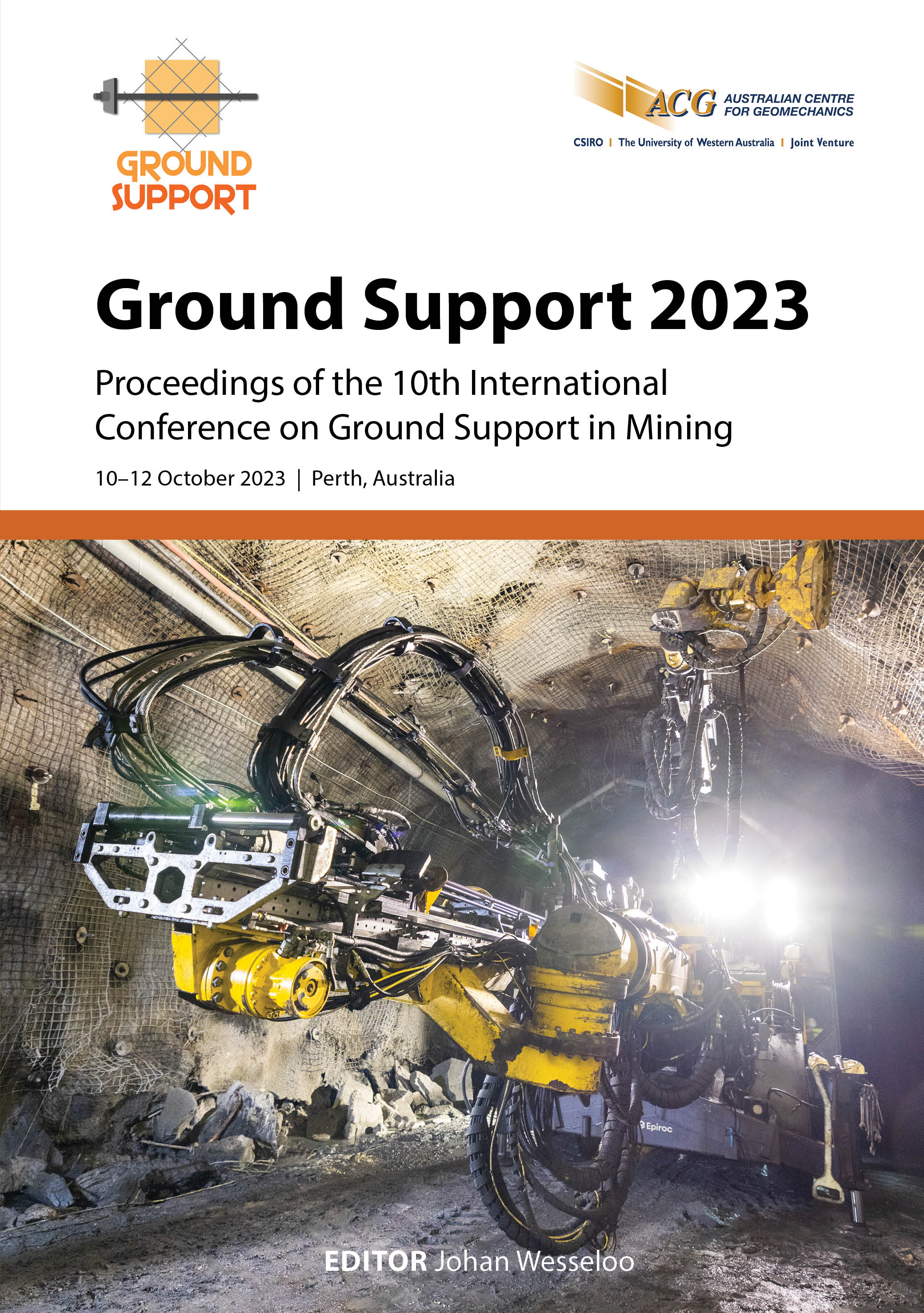Excavation and support of ventilation shafts with blind hole methodology in the Andes Norte project

|
Authors: Navarrete, R; Valdivia, R; Bisa, L |
DOI https://doi.org/10.36487/ACG_repo/2325_21
Cite As:
Navarrete, R, Valdivia, R & Bisa, L 2023, 'Excavation and support of ventilation shafts with blind hole methodology in the Andes Norte project', in J Wesseloo (ed.), Ground Support 2023: Proceedings of the 10th International Conference on Ground Support in Mining, Australian Centre for Geomechanics, Perth, pp. 319-332, https://doi.org/10.36487/ACG_repo/2325_21
Abstract:
After 118 years of operation at its emblematic El Teniente mine, Codelco seeks to extend the mine’s useful life by more than 50 years with the exploitation of the deposit through the new mine level (Nuevo Nivel Mina in Spanish, or NNM) which includes the Andes Norte, Andesita, Diamante and Recursos Norte projects. The project adds 2,020 million tonnes of reserves with average grades of 0.86% copper and 0.022% molybdenum. This translates to more than 17 million tonnes of fine copper over the 50 years of operation (which commenced in 2018). The configuration of the project comprises exploitation through the panel caving method, with 100% of the area preconditioned with hydraulic fracturing and a typical level scheme of the El Teniente mine: caving, production, ventilation, transport and primary crushing. This paper describes the support of ventilation shafts in an unfavourable rock area within the Andes Norte project. This adversity is intensified by the hydrofracturing required for development works due to the stress to which the rock mass of the project is subjected as a result of high stress and anisotropy. The objective of these vertical excavations, or ventilation shafts, is to facilitate the injection of clean air from outside the mine and the extraction of contaminated air from inside. The construction process of these shafts begins with the drilling of a pilot hole that takes the same trajectory as the planned shaft. This is followed by the mechanised excavation using a blind hole machine. The ground support process includes the installation of lifting instruments and manual insertion of galvanised corrugated liner (referred to as a steel liner at this stage) which is then lowered down the shaft until it reaches the bottom. Next comes concreting of the annular space between the liner and the excavated rock of the shaft. This paper discusses the operation, lessons learned and how certain unique challenges were addressed during the construction phase. The goal is to initiate the ventilation system for the various levels of the project.
Keywords: El Teniente, ventilation shaft, panel caving method
References:
Codelco 2017, Bases Técnicas de Contratación CC-081: Obras Mineras y Civiles Niveles Principales (Technical Contracting Bases CC-081: Mining and Civil Works Main Levels), Codelco internal report.
Rodriguez, W, Valdivia, R, Padilla, R, Soto, C, Guajardo, A, Millan, J & Pulgar, D 2023, Evaluación Geotécnica de Piques (OPs) XC3AS & XC-2AS (Geotechnical Evaluation of Shafts), Codelco internal report.
Codelco 2023, Nota Técnica T18M404-02000-NOTGE-00090, Evaluación Geotécnica de Piques (OP’s) XC3AS & XC-2AS (T18M404-02000-NOTGE-00090 Geotechnical Evaluation of Pits (OPs) XC3AS & XC-2AS), Codelco technical report.
Cifuentes, C, Romero, D & Rojas, E 2019, Informe Avance N°2, Prueba de Morfología FH Andes Norte (Advance Report No. 2, Morphology Test FH Andes Norte), Codelco internal report.
© Copyright 2025, Australian Centre for Geomechanics (ACG), The University of Western Australia. All rights reserved.
View copyright/legal information
Please direct any queries or error reports to repository-acg@uwa.edu.au
View copyright/legal information
Please direct any queries or error reports to repository-acg@uwa.edu.au
